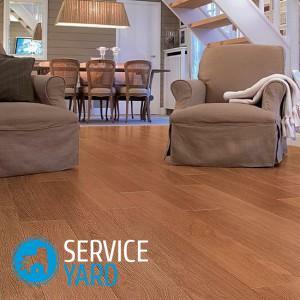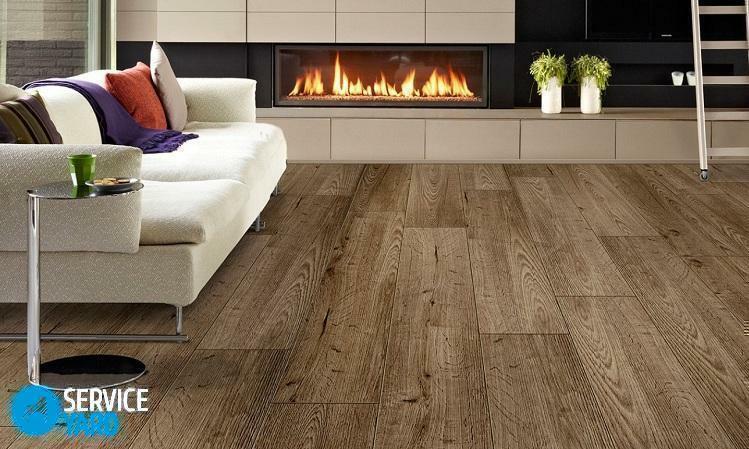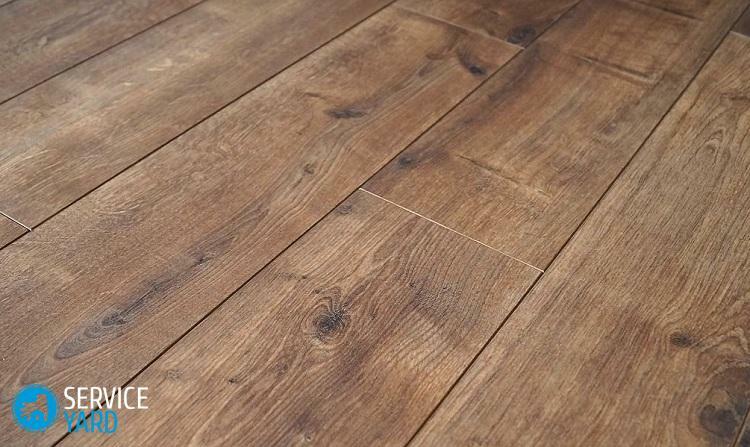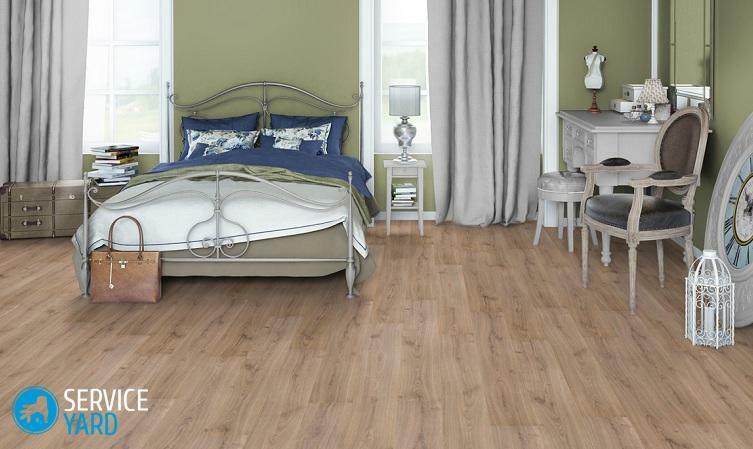
- Advantages of laminate
- How is laminate made?
- How is the class defined?
- What are the categories?
- For how long to calculate?
- Laminate 32 or 33 class - which is better?
- A little bit about other classes of
- Where to put it?
- A few words about additional criteria
- Two words about the method of manufacturing
Among floor coverings, laminate is now the undisputed leader. It is durable, hygienic, affordable, and a variety of textures and colors allows you to develop individual design solutions for any interior. However, the buyer sometimes becomes at a dead end when he learns that the floor covering belongs to one or another class. Which class of laminate is better - 32 or 33?Read about this in our article.
to content ↑Advantages of laminate
Laminate is a multilayered coating. The layers are pressed, which gives this material its remarkable qualities:
- wear resistance;
- longevity;
- ecological compatibility;
- excellent thermal insulating properties;
- good sound insulation;
- simplicity of installation;
- ease of care.
Important! These qualities are typical for all classes of material, but the larger the number, the longer the coating is and the less it suffers from the effects of moisture and mechanical stress. This depends on the method used in the fabrication of the material.
to the contents ↑How is laminate made?
This kind of coating consists of several layers:
- bottom;
- average;
- decorative;
- overlay.
The main layer is medium, it determines the heat and sound protection qualities. It is the thickest and is made of wood-particle or wood-fiber board, in which special plastic is added to the production of high-quality materials. The lower layer has a purely technological significance, it serves as a buffer between the floor surface and the middle layer. For its manufacture, paper treated with special resin is used.
Important! You can find a laminate with a cork bottom layer, as well as polystyrene or made of aluminum foil.
Decorative - the one on which the drawing. For its production paper is used most often. It is thin enough, but it depends on it the appearance of your room. Finally, the overlay is a protective film. As a rule, it is made of acrylic resin, which, among other things, is a good antistatic. It protects your floor from mechanical influences, protects against burnout and pollution.
to the contents ↑How is the class defined?
On the laminate labeling, there are usually two figures indicating the class. They do not just appear. This material, before getting into the outlets, is subject to very thorough testing, consisting of many items. Marking - this is a kind of passport material, allowing the buyer to quickly navigate.
The most rigorous testing consists of 18 items. It is these studies conducted by the European Standards Association before giving the producer the right to launch new material into batch production. But in order to determine whether a particular lot conforms to the standards, a less stringent test of seven indicators is used:
- resistance to abrasion;
- resistance to water;
- treatment of pollutants;
- resistance to indentation;
- resistance to decay;
- attitude to the movement of furniture;
- attitude to the movement of furniture on castors.
Important! The class is set at the lowest value. If for all parameters the laminate corresponds to class 34, and only one - 32, the certificate will be 32, and nothing else.
to the contents ↑What are the categories?
A few years ago on sale it was possible to meet six classes of laminate. In some cases, the first number was 2, in others - 3. Now the material with the "dvoechkoy" in the certificate can still be found in retail outlets, but from production it was removed almost everywhere, although this laminate was originally intended for residential premises. But he abrades very quickly, does not like moisture and after a few months loses his attractive appearance. So laminate grades 21,22 and 23, if you suddenly get to it, you can only cover in rooms where very little go.
Popularity "dvoechnye" laminates lost because with a very small difference in the price of materials with the first figure of 3 were much more reliable. Now on sale you can meet four classes of this laminate, originally intended for public buildings:
- 31;
- 32;
- 33;
- 34.
If the first digit indicates which material is intended for the rooms, then by the second one you can find out its quality - thickness, moisture resistance, attitude to mechanical influences, etc.
to the contents ↑For how long to calculate?
The thinnest material - with the marking 31. Of course, for residential premises it is suitable. Coverage, where the certificate number is 34, is intended for buildings where a lot of people come. This is the most durable of the existing laminates, it is designed for twenty years of intensive operation. True, it is much more expensive than others.
The most reasonable combination of price and quality - laminates classes 32 and 33. In public buildings they are used wherever a moderate number of visitors - in offices, hospital wards, school classes. In the apartment, this material can be laid everywhere - from the living room to the kitchen and the corridor. They are slightly less stable than those who belong to the 34th class, but they are also capable of serving for several decades with faith and truth. For comparison, the service life of Class 23 material is no more than six years.
to content ↑Laminate 32 or 33 class - which is better?
Initially, the 32-marking material was intended for public spaces with little attendance. If 200-300 people walk through it every day, this material can last about ten years and maintain an attractive appearance and all other qualities. It will not be worn out, but during that time you will probably want to make a new repair. The overlay has a thickness of 0.2-0.4 mm.
Class 33 laminate is even more resistant to various impacts. It can withstand:
- 500 visitors every day;
- bright sunlight;
- 15-year operation.
The improved properties of the Class 33 laminate are due to the use of an additional layer.
What do they look like?
Laminates 33 and 32 classes have much in common:
- they are made using similar technologies;
- they have an interesting and diverse design;
- large thickness of the middle layer;
- reliable upper and lower layers.

Very often high-quality laminate is made out "under the parquet" or "under the logs."Materials of lower quality with such a pattern were not produced. But there are options for natural stone, and with fantasy ornaments, and monophonic - in a word, there are a lot of opportunities to show their design abilities.
Important! With regard to the middle layer, then with the one and the other material it is between 7 and 11 mm. When deciding which class of laminate is better - 32 or 33, one must understand that class 32 material can also be thick, but it is inferior to some of the test parameters 33.
Differences
Given that these materials are extremely similar, the difference in pricea lot is obtained. Class 33 laminate costs about twice as much as what, for whatever reason, received a mark of 32. This is due, among other things, to the presence of an additional protective layer in the coating of a higher class.
to content ↑A bit about other
classes Thinking about which class of laminate is better - 32 or 33, we need to consider other options for comparison.
31 class
Laminate 31 class can be very high quality! If you start from the testing features, you can find a material with excellent thermal protection properties, but a little less resistant to abrasion, or vice versa. It costs less than its counterparts, although in comparison with materials of grade 32, the difference is not very significant.
Important! Serves such a cover with intensive operation for about five years, but in an apartment, especially where they do not often walk in street shoes and do not move the piano every day, can lie much longer and not lose their properties.
The thickness of the main layer is from 6 to 10 mm, that is, this parameter is not very different from its more high-class counterparts. The overlay has a thickness of 0.2 mm - slightly less than that of 32. This is quite a quality material, besides, it is relatively inexpensive.
34 class
As for the 34th grade, it is rarely used for the finishing of dwellings. The reason is simple - it is, of course, very durable and resistant to negative impacts, but it costs more than others, and the difference in price is very significant. At the same time, if you put it in an apartment, there are no tangible advantages to using this material.
to the contents ↑Where to put it?
If you do not want to buy the same kind of laminate for the whole apartment, do not forget to think in advance which room you can spread the material of this or that class. So, what class of laminate is better - 32 or 33, for living rooms?
Bedroom, nursery and living room
In these rooms people rarely go boots or boots. Therefore, it is possible to lay the floor of laminate 32, 31 and even 23 class:
- mechanical impact is insignificant;
- no big danger to shed oil on the floor, paint;
- most often in these rooms people go in soft slippers or even barefoot, except for the living room, where guests come in elegant shoes, but this does not happen every day;
- there are no changes in humidity and temperature.
Therefore, the strength of the coating does not play a special role, especially if one considers that even the cheapest and low-quality laminate is designed for the fact that several dozen people will walk on it every day, at least.
Important! It all depends on how many years you are going to do the next repair - for ten years, such coverage is sure enough, and during this time the material will have time to bother you, and you want something new.
Kitchen
In this room, there are periodic changes in temperature and humidity. Therefore, the stronger the floor covering, the better. In addition, even in very tidy housewives periodically something falls or spills on the floor, so that the spots of fat here are quite common.
And this means - the laminate should be:
- thick enough;
- well tolerates impacts and falls of heavy objects;
- neutral to detergents;
- is maximum resistant to moisture;
- resistant to temperature changes;
- insensitive to the neighborhood of hot household appliances.
Important! That is, choosing which class of laminate is better - 32 or 33, it is best to buy material where the certificate is 33, or even 34. You can, of course, bed and 32, and 31, but then how lucky. It can happen that the coating will tolerate moisture well and have excellent noise protection properties, but will not be resistant to mechanical influences. But what can not be done in any case - it's to lay the material, in the designation of which the first digit is 2.

Hallway
This room differs from all others mainly in that people come here often in street shoes. Of course, residents of many city apartments sometimes arrange on their floor something like an additional hallway and leave shoes, bicycles and roller skates there, but this possibility is far from everyone.
As there is a lot of dirt in the hallway, the floor should be of the highest quality:
- strong;
- well tolerate moisture and detergents;
- is good for carrying heavy objects and other mechanical effects.
Temperature differences in this case do not play a big role, but cleanliness, including using water and detergents, is much more frequent than in other rooms. Therefore, the best laminate for the hallway is class 33 or even 34.
Bathroom
Laminate is not the most popular type of flooring in the bathroom, tiles are more often used. But laminated panels are also periodically used, especially if the bathroom is large and I want to give it an interesting look. From all other premises, the bathroom is characterized primarily by high humidity, and the high concentration of water vapor in the air is a constant phenomenon. Therefore, you can only lay the most durable material that tolerates such conditions without serious consequences. Therefore, when deciding which class of laminate is better - 32 or 33, preference is clearly in favor of increasing the value.
to the table of contents ↑A few words about additional criteria
When buying laminate flooring, pay attention not only to the numbers in the certificate. There are a few other parameters that can significantly simplify or complicate your life. In the documentation( or on the packaging) you will certainly find more figures that indicate:
- thickness;
- density;
You will find there also letter symbols, which also can tell a lot about the qualities of the material.
Thickness
The thickness of the slab even for a laminate of the same class can be different. Sometimes it varies from 8 to 12 mm, and this, you know, is a significant difference. Therefore, pay attention to the exact value of this parameter.

Density
The package indicates the density. A good laminate with a marking beginning with a "triplet", density is not less than 850 kg / m3.If you want, you can calculate it yourself, if you do not find it in the documentation. In addition, you can see on the packaging the abbreviations:
- NDF;
- MDF.
The first means that the material is made according to European or American standards, the second - according to Russian standards. In the first case, the density, other things being equal, will be higher.
to the contents ↑Two words about the method of manufacturing
In the documentation for the laminate floor, you can find many interesting and not very clear symbols. For example, here are the abbreviations:
- HPL;
- CPL;
- DPL.
They can tell you about the method of manufacture. In particular, the pressure:
- The HPL marking indicates that the high-pressure overlay was first compressed and the decorative layer, then what was obtained was glued the base and the lower layer, and then again sent under the press. If you see a 33 or 34 in front of you, then somewhere near the HPL abbreviation.
- If you see the CPL marking, then - before you laminate 31 or 32 classes. It is also made at high pressure, but with the help of a band press.
- Laminates, the marking of which begins with the "deuce" was done using the DPL technology, that is, pressed all the layers simultaneously.
So we figured out what class of laminate is better - 32 or 33, and on what other values accompanying this characteristic should be paid attention. We hope that with this information you can now easily choose the perfect floor covering for a bedroom, living room, hallway or bathroom in your home.
